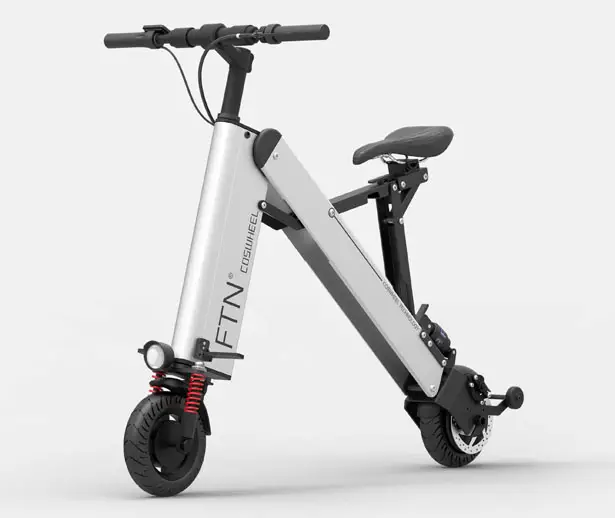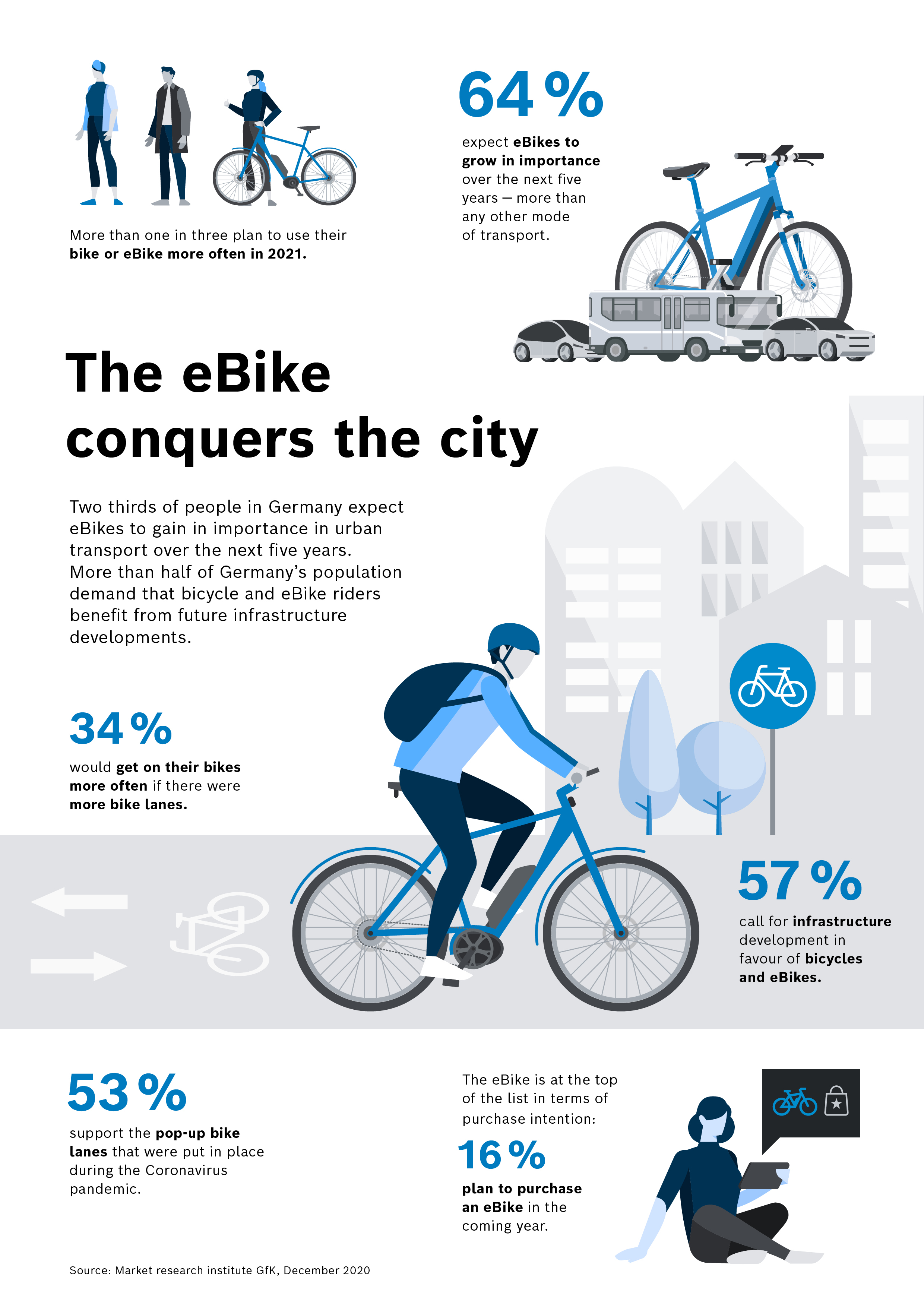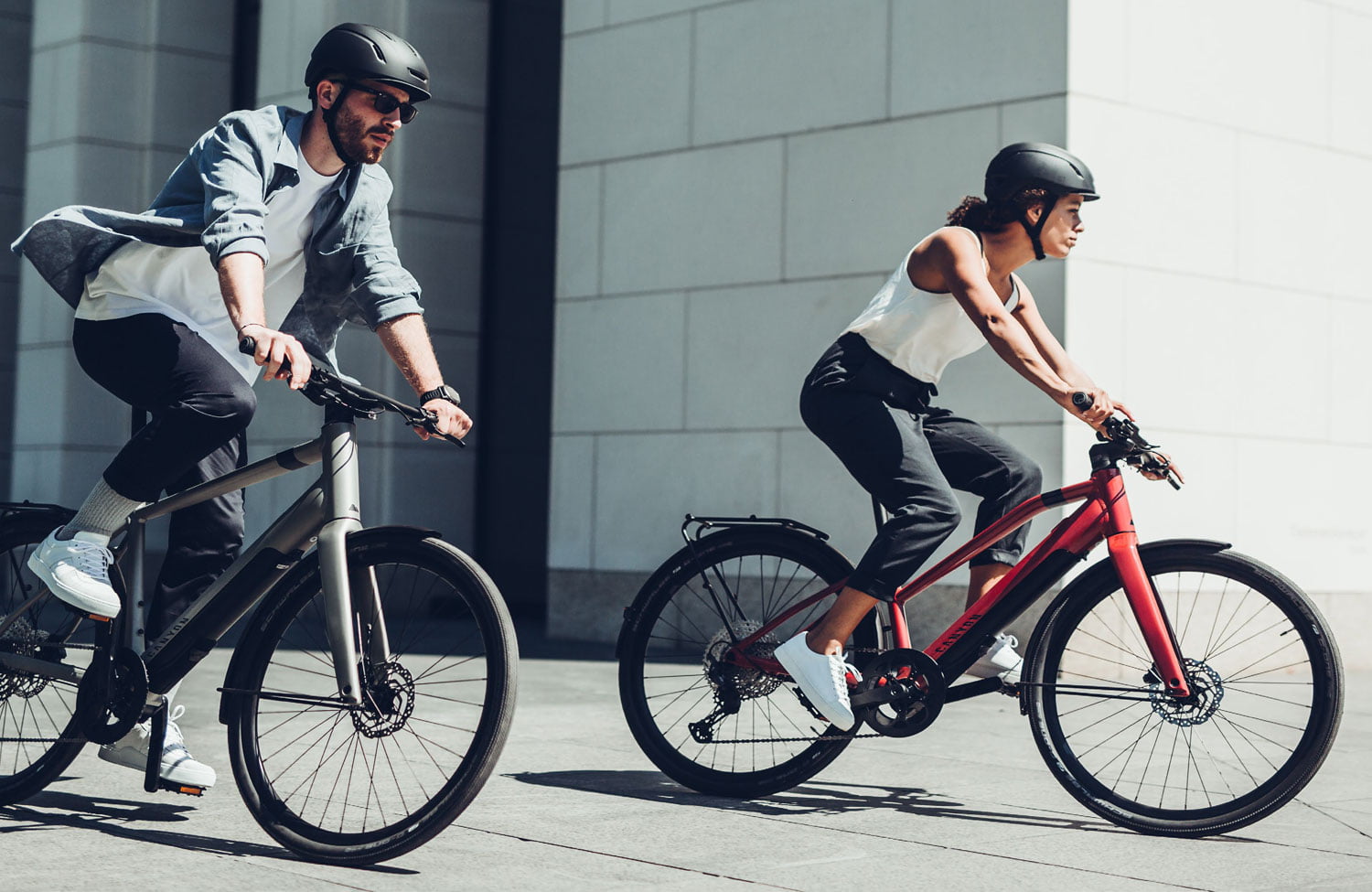Exploring the Impact of eBikes on Modern Cities
eBikes, or electric bicycles, have emerged as a popular and eco-friendly transportation solution in urban areas. By combining human power with an electric motor, eBikes in urban transportation offer a practical, enjoyable, and sustainable way to navigate city streets. This article delves into the growing significance of eBikes in urban settings, highlighting their contribution to easing traffic congestion, reducing air pollution, and promoting a healthy lifestyle.
Traffic congestion is a persistent challenge in many urban areas, negatively affecting productivity, air quality, and overall quality of life. eBikes in urban transportation have demonstrated the potential to alleviate this issue. eBikes require less space than traditional vehicles, enabling smoother traffic flow and reducing the need for extensive parking infrastructure. Moreover, eBike riders can take advantage of bike lanes and other dedicated cycling facilities, further easing traffic congestion and promoting a more efficient urban transportation system.
Air pollution is another critical concern in urban environments, with transportation being a significant contributor to greenhouse gas emissions. eBikes in urban transportation offer a promising alternative, producing minimal emissions and helping to reduce air pollution. By encouraging the use of eBikes, cities can work towards cleaner air, healthier citizens, and a more sustainable future.
Lastly, eBikes in urban transportation promote a healthy lifestyle by providing a low-impact exercise option for daily commuting. Regular physical activity is essential for maintaining good health, and eBikes offer a convenient and enjoyable way for city dwellers to incorporate exercise into their daily routines. Furthermore, eBike riders often report reduced stress levels and improved mental well-being, contributing to an overall enhanced quality of life.

How eBikes Enhance Personal Urban Mobility
eBikes in urban transportation offer numerous benefits for daily commuting, making them an attractive alternative to traditional vehicles. By incorporating an electric motor into the design, eBikes provide several advantages, including cost-effectiveness, time-saving capabilities, and parking convenience.
One of the most significant advantages of eBikes in urban transportation is their cost-effectiveness. Compared to cars or public transportation, eBikes require minimal financial investment. Maintenance costs are generally lower, and eBike riders can save on fuel expenses, parking fees, and insurance premiums. Moreover, eBikes are often exempt from registration and licensing requirements, further reducing their overall cost.
Time-saving is another crucial benefit of eBikes in urban transportation. City dwellers often face lengthy commutes, with traffic congestion and limited parking options adding to their frustration. eBikes offer a faster and more agile mode of transportation, allowing riders to bypass traffic jams and navigate narrow city streets with ease. Furthermore, eBike riders can enjoy direct routes, avoiding the need to plan their journey around bus or train schedules.
Parking convenience is a major advantage of eBikes in urban transportation. Finding a parking spot in a crowded city can be time-consuming and expensive. eBikes, however, can be parked almost anywhere, eliminating the need for dedicated parking spaces. Riders can secure their eBikes to bike racks, street signs, or other sturdy structures, providing them with peace of mind and saving valuable time.
In summary, eBikes in urban transportation offer a cost-effective, time-saving, and convenient alternative to traditional vehicles. By embracing eBikes, city dwellers can enjoy a more efficient and enjoyable daily commute, ultimately improving their overall quality of life.

Comparing eBikes with Conventional Bicycles and Public Transportation
eBikes in urban transportation offer a unique blend of benefits from both conventional bicycles and public transportation systems. By examining aspects such as speed, effort, and accessibility, we can better understand the advantages and disadvantages of eBikes compared to these alternatives.
Speed
In terms of speed, eBikes generally outperform conventional bicycles, especially when dealing with hilly terrain or long distances. eBikes can reach speeds of up to 20-28 mph, depending on the model and local regulations. This is significantly faster than traditional bicycles, which typically max out around 10-15 mph. However, public transportation, such as buses and trains, can still provide faster overall travel times in certain situations, particularly for longer commutes.
Effort
One of the primary advantages of eBikes in urban transportation is the reduced effort required compared to conventional bicycles. eBikes offer pedal-assist technology, which amplifies the rider’s pedaling input, making it easier to navigate uphill slopes, fight headwinds, or simply maintain a consistent pace. This feature is particularly beneficial for those who want to avoid arriving at their destination sweaty and fatigued. In contrast, traditional bicycles require more physical exertion, which may not be ideal for daily commuting, especially during inclement weather or when carrying heavy loads.
Accessibility
eBikes in urban transportation offer improved accessibility compared to both conventional bicycles and public transportation. For those with mobility issues or physical limitations, eBikes can provide a more comfortable and manageable commuting experience. The pedal-assist feature reduces the strain on joints and muscles, making it easier for riders of all ages and abilities to navigate city streets. In comparison, public transportation may not always be accessible or convenient, with limited schedules, crowded conditions, and long walks to and from stations.
In conclusion, eBikes in urban transportation offer a compelling alternative to both conventional bicycles and public transportation. By providing faster speeds, reduced effort, and improved accessibility, eBikes can significantly enhance the daily commuting experience for city dwellers. However, it is essential to consider individual needs and preferences when choosing the best mode of transportation for urban environments.

Selecting the Right eBike for Urban Commuting
eBikes in urban transportation have gained popularity due to their numerous benefits, including easing traffic congestion, reducing air pollution, and promoting a healthy lifestyle. When considering an eBike for daily commuting, various factors come into play, such as price range, bike type, battery life, and maintenance requirements. This guide will help you make an informed decision when selecting the perfect eBike for urban transportation.
Price Range
eBikes are available in a wide range of prices, from budget-friendly options under $1,000 to high-end models costing over $5,000. Determine your budget before making a purchase, keeping in mind that more expensive eBikes often come with better components, longer-lasting batteries, and enhanced features. However, there are also many affordable eBikes that offer excellent performance and value for city dwellers.
Bike Type
Several eBike types cater to different needs and preferences. For example, folding eBikes are ideal for those with limited storage space, while cargo eBikes can accommodate heavy loads and even serve as an alternative to cars for small families. Commuter eBikes, on the other hand, are designed for daily commuting, offering a balance between speed, comfort, and convenience.
Battery Life
Battery life is a crucial factor when choosing an eBike for urban transportation. Most eBike batteries range from 250 to 750 watts, with higher-wattage batteries providing more power and longer range. Consider your daily commute distance and the availability of charging stations when evaluating battery life. Additionally, look for eBikes with removable batteries, as this feature makes it easier to charge the battery at home or in the office.
Maintenance Requirements
eBikes generally require less maintenance than traditional bicycles due to their electric components. However, it is essential to consider the maintenance requirements of an eBike before making a purchase. Look for eBikes with durable components, such as rust-resistant chains and puncture-resistant tires, to minimize maintenance costs. Additionally, ensure that the eBike comes with a warranty to protect your investment.
In conclusion, selecting the right eBike for urban commuting involves considering various factors, including price range, bike type, battery life, and maintenance requirements. By carefully evaluating these aspects, you can find an eBike that meets your needs and enhances your daily commuting experience. Remember to always prioritize safety and follow local regulations when riding an eBike in urban areas.

Real-Life Examples: Top eBike Models for City Dwellers
eBikes in urban transportation have become increasingly popular due to their numerous benefits, such as easing traffic congestion, reducing air pollution, and promoting a healthy lifestyle. With a wide range of eBike models available, choosing the perfect one for urban commuting can be challenging. This article highlights some of the best eBike models for city dwellers, discussing their unique features, user reviews, and overall performance in an urban setting.
1. Specialized Turbo Vado 4.0
The Specialized Turbo Vado 4.0 is a high-performance eBike designed for urban commuting. It features a powerful motor, long-lasting battery, and a comfortable riding position. The bike’s sleek design and integrated lights make it an attractive option for city dwellers. Users praise the Vado 4.0 for its smooth ride, easy handling, and reliable components.
2. Rad Power Bikes RadCity Step-Thru 3
The RadCity Step-Thru 3 is an affordable and practical eBike for urban transportation. Its step-through frame design makes it easy to mount and dismount, while the powerful motor and sturdy construction ensure a comfortable and reliable ride. Users appreciate the bike’s versatility, affordability, and low maintenance requirements.
3. Tern Vektron S10
The Tern Vektron S10 is a folding eBike that combines convenience and performance. Its compact design makes it easy to store and transport, while the powerful motor and high-quality components ensure a smooth and enjoyable ride. Users love the Vektron S10’s versatility, durability, and ease of use.
4. Copenhagen Wheel
The Copenhagen Wheel is a unique eBike solution that transforms any bicycle into an electric one. The wheel features a powerful motor, integrated battery, and smart technology that adapts to the rider’s needs. Users enjoy the wheel’s simplicity, affordability, and compatibility with various bicycle types.
5. Gazelle Medeo T9 City
The Gazelle Medeo T9 City is a stylish and practical eBike for urban transportation. It features a comfortable riding position, powerful motor, and long-lasting battery. The bike’s sleek design and integrated lights make it an attractive option for city dwellers. Users appreciate the Medeo T9 City’s smooth ride, easy handling, and reliable components.
In conclusion, choosing the right eBike for urban commuting involves considering various factors, such as price range, bike type, battery life, and maintenance requirements. By evaluating these aspects and considering the top eBike models for city dwellers, you can find an eBike that meets your needs and enhances your daily commuting experience. Remember to always prioritize safety and follow local regulations when riding an eBike in urban areas.
Navigating City Streets Safely on an eBike
eBikes in urban transportation have gained popularity due to their numerous benefits, such as easing traffic congestion, reducing air pollution, and promoting a healthy lifestyle. However, safety remains a top priority for eBike riders in urban areas. This article shares essential safety tips for eBike riders, including proper gear, road rules, and defensive driving techniques to ensure a secure and enjoyable urban commuting experience.
Wear Appropriate Gear
Always wear a helmet when riding an eBike in urban areas. Helmets protect your head in case of accidents and are mandatory in many cities. Additionally, consider wearing reflective clothing or accessories to increase your visibility to other road users, especially at night or in low-light conditions.
Follow Road Rules
Familiarize yourself with local traffic laws and regulations for eBikes. Obey traffic signals, signs, and lane markings. Use designated bike lanes when available, and always ride in the same direction as traffic. Remember to signal your intentions before turning or changing lanes to communicate with other road users.
Practice Defensive Driving
Defensive driving involves anticipating potential hazards and taking proactive measures to avoid them. Stay alert and aware of your surroundings, making eye contact with drivers and pedestrians when possible. Avoid distractions, such as using your phone or listening to loud music, while riding. Maintain a safe distance from other vehicles and be prepared to react to sudden stops or changes in traffic patterns.
Maintain Your eBike
Regular maintenance is crucial for ensuring your eBike’s safe operation. Check tire pressure, brake functionality, and light operation before each ride. Keep your eBike clean and well-maintained to prevent mechanical issues that could lead to accidents. Follow the manufacturer’s recommendations for maintenance schedules and repairs.
Plan Your Route
Choose routes with dedicated bike lanes, lower traffic volumes, and slower speed limits when possible. Avoid riding on sidewalks or through crowded pedestrian areas. Use navigation apps designed for cyclists to find the safest and most efficient routes for your commute.
Secure Your eBike
Theft is a common concern for eBike owners in urban areas. Always lock your eBike when leaving it unattended, using high-quality locks and securing it to a fixed object. Consider investing in additional security measures, such as GPS tracking devices or insurance coverage, to protect your eBike from theft.
In conclusion, navigating city streets safely on an eBike requires proper gear, adherence to road rules, defensive driving techniques, regular maintenance, route planning, and secure storage. By following these safety tips, eBike riders can enjoy a secure and enjoyable urban commuting experience while contributing to the broader goals of easing traffic congestion, reducing air pollution, and promoting a healthy lifestyle.

Creating a Bike-Friendly Urban Infrastructure
eBikes in urban transportation have gained traction due to their numerous benefits, such as easing traffic congestion, reducing air pollution, and promoting a healthy lifestyle. However, the widespread adoption of eBikes in cities relies heavily on the development of bike-friendly urban infrastructures. This article advocates for the creation of dedicated bike lanes, parking facilities, and traffic management systems to promote the use of eBikes in urban areas.
Dedicated Bike Lanes
Cities should invest in creating a network of safe and accessible bike lanes to encourage eBike usage. Dedicated bike lanes provide a clear separation between cyclists and motor vehicles, reducing the risk of accidents and increasing rider confidence. Cities can also explore innovative solutions, such as protected bike lanes with physical barriers or greenways that integrate bike lanes into existing parks and green spaces.
Secure Parking Facilities
Secure and convenient parking options are essential for eBike users in urban areas. Cities can develop bike racks, lockers, and parking stations that provide a safe space for eBikes while their owners are at work, shopping, or engaging in other activities. Additionally, integrating eBike parking into public transportation hubs, such as train stations and bus stops, can encourage multimodal commuting and further reduce traffic congestion and air pollution.
Smart Traffic Management Systems
Smart traffic management systems can significantly improve the safety and efficiency of eBike usage in urban areas. Intelligent traffic signals that prioritize cyclists, real-time traffic data for eBike riders, and connected infrastructure that communicates with eBikes can all contribute to a more seamless and enjoyable urban commuting experience. By incorporating eBikes into broader transportation planning efforts, cities can create a more integrated and sustainable urban mobility ecosystem.
In conclusion, the development of bike-friendly urban infrastructures is crucial for the widespread adoption of eBikes in cities. By investing in dedicated bike lanes, secure parking facilities, and smart traffic management systems, cities can promote the use of eBikes in urban transportation, ultimately easing traffic congestion, reducing air pollution, and encouraging a healthy lifestyle for their residents.
Overcoming Challenges and Encouraging eBike Usage in Urban Areas
eBikes in urban transportation have emerged as a promising solution to various urban mobility issues, including traffic congestion, air pollution, and sedentary lifestyles. However, several challenges must be addressed to foster a bike-friendly culture in cities. This article explores common obstacles to eBike adoption in urban areas, such as range anxiety, theft concerns, and regulatory issues, and proposes solutions to overcome these challenges.
Range Anxiety
Range anxiety, the fear of running out of battery power during a trip, is a common concern among eBike users. To alleviate this issue, cities and eBike manufacturers can invest in a robust charging infrastructure, including charging stations and swappable batteries. Additionally, eBike users can adopt energy-saving strategies, such as pedaling more frequently, using lower assist levels, and maintaining their eBikes in good condition to optimize battery life.
Theft Concerns
Theft is a significant concern for eBike owners in urban areas. To mitigate this risk, cities and eBike manufacturers can collaborate to develop innovative security solutions, such as smart locks, GPS tracking devices, and geofencing technology. Furthermore, eBike users should follow best practices for securing their eBikes, such as using high-quality locks, registering their eBikes, and parking them in well-lit, visible areas.
Regulatory Issues
Regulatory issues, such as eBike classification, speed limits, and helmet requirements, can impact eBike adoption in urban areas. Cities should develop clear and consistent regulations that balance safety, accessibility, and convenience. Collaboration between policymakers, eBike manufacturers, and user groups can help create regulations that promote eBike usage while ensuring the safety of all road users.
In conclusion, addressing common challenges to eBike adoption in urban areas, such as range anxiety, theft concerns, and regulatory issues, is crucial for fostering a bike-friendly culture in cities. By implementing innovative solutions and best practices, cities can overcome these obstacles and promote the widespread adoption of eBikes in urban transportation, ultimately easing traffic congestion, reducing air pollution, and encouraging a healthy lifestyle for their residents.

